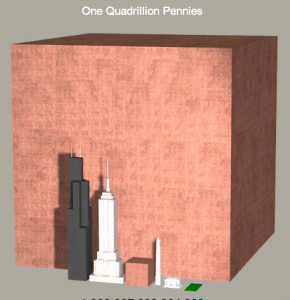A hearty congratulations goes out to our friends over at the Internet Archive! On Thursday, October 25, the Internet Archive staff rang in the byte that broke the 10,000,000,000,000,000 barrier. That means that over 10,000,000,000,000,000 bytes of the internet have been archived in the Internet Archive’s library, preserving thousands of pages.
The Internet Archive’s Mission
The reason? The Internet Archive was founded with the purpose of creating an internet library in the same way that physical libraries or museums exist: “to preserve society’s cultural artifacts and to provide access to them.” Due to the dynamic nature and historical significance of the internet, there is a significant amount of culturally important data that would be at risk of disappearing forever. This is not unlike the U.S. Library of Congress’ initiative that is currently archiving all public Tweets. The Library of Congress sees Twitter as a historically important barometer of public opinion that provides a valuable pulse on the nation’s sentiments. In fact, the Library of Congress has collaborated with the Internet Archive in preserving a wide variety of web pages and other collections.
Understanding 10,000,000,000,000,000 bytes
To get back to the question at hand: how much is 10,000,000,000,000,000 bytes? A number with this many zeroes is certainly difficult to wrap one’s head around. But, fortunately, the MegaPenny Poject has supplied a very helpful image. If one penny is equal to one byte, then the image below illustrates just how large 1,000,000,000,000,000 really is.
Of course, the Internet Archive has 10 times that many bytes in its archive, so you would have to add 10 more equally sized cubes to reach the equivalent of the Internet Archive’s accomplishment. And, by the way, just one cube is about half a mile wide. No small feat by any means, the Internet Arc hive’s recent milestone is certainly admirable. We are looking forward to 100,000,000,000,000,000 petabytes in the near (?) future!


